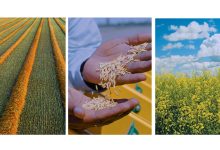High specialization in Raman Spectroscopy

Focus on the group of Professor Andreas Braeuer at the Institute of Thermal-, Environmental- and Resources’ Process Engineering (ITUN) at TU Bergakademie Freiberg, Germany.
by Paolo Trucillo
From the 2nd to the 8th of June, I was invited by Andreas Braeuer, full Professor of Thermal Process Engineering, to give lectures on the topics studied during my Ph.D program. Professor Braeuer is the director of the Institute of Thermal-, Environmental- and Resources’ Process Engineering (ITUN), at the TU Bergakademie Freiberg.
Freiberg is an old mining town in the Saxony region of Germany, set in the East of the country. The town expanded over the years, and now it is not only a well-organized and modern city, but also the official seat of the Bergakademie University.
Nowadays, Andreas Braeuer is considered one expert in the Applied Raman Scattering field. Raman spectroscopy is a technique commonly used to detect molecular vibrations. It represents a non-destructive analysis, that does not require a complex preparation step, that gives qualitative and quantitative information on the type and number of molecules. Raman spectroscopy can be employed in the study of crystal growth and nucleation, or to detect different polymorphic structures, to measure diffusion coefficients from a medium to another, and to observe the growth mechanisms of carbon dioxide hydrates.
During my visit in Freiberg, I had the possibility to work and share experience with his colleagues and collaborators, that have shown me their equipment and research activity.
Researchers on Raman Spectroscopy…
Christine Holzammer, M.Sc.., is investigating the effect of aqueous salt solutions on the formation behavior of CO2 gas hydrates. Gas hydrates are crystalline solids that consist of a hydrogen bonded water cage and gas molecules inside them. They are formed at low temperatures and high pressures. As they are solids, they can block or destroy pipelines in drilling applications. In order to prevent the formation of hydrates, inhibitors like salts are added. These disturb the hydrogen bonded network in water and thus prevent hydrates from forming. She investigates the disturbance that the salts induce in the water-rich phase via the Raman signal of water, which is influenced by the development of hydrogen bonds. Additionally, she determines the amount of hydrate that forms with the addition of salts and their influence on the growth kinetics.
Zheng Li is a visiting Ph.D. student from Chongqing University (China), where he is studying Power Engineering and Engineering Thermodynamics under the supervision of Professor Dongliang Zhong. His research focuses on thermodynamic and kinetics of the hydrate based gas separation process. He started his collaboration period in Andreas Bräuer’s group in September 2018. He is continuing Dr. Holzammer’s work, since his research is focused on the use of Raman spectroscopy for the analysis of the formation of hydrates from gas mixtures.
Michael Fechter, Ph.D. student, is mainly focusing on the investigation of Vapor-Liquid-Equilibria (VLE) of fuel and gas mixtures under high pressure and temperature conditions. Therefore, a continuous setup is used using a microcapillary located inside a heating block and connected to high pressure pumps. Mixing gas and liquid, a two-phase flow is formed inside the microcapillary, that leads to a fast equilibration between liquid and vapor segments. By the use of in situ Raman spectroscopy and light barrier technology, these segments can be measured phase-selectively to obtain the compositions of the liquid and the vapor phase at a wide range of pressure and temperature. Thereby, he can achieve VLE data such as t-x- and p-x-diagrams.
Medhanie T. Gebrekidan, Ph.D. student from Ethiopia, is focused on Shifted–Excitation Raman Difference Spectrosocpy (SERDS) for process engineering and medical diagnostics. He has developed a Raman clinical sensor based on the principle of shifted excitation wavelength to extract Raman spectra from heavily fluorescence interfered tissue spectra. In this principle, the fluorescence emission is unaltered for a small change in the excitation photon energy, while the Raman spectrum shifts according to the excitation photon energy. Therefore, the subtraction of two spectra from each other acquired with slightly different excitation wavelengths makes possible the elimination of the fluorescence background following by further data processing. Applying SERDS, he is investigating oral cancer and precancerous lesions. Since the formation of tumor changes the structure and composition of tissue, such as the content of carbohydrates, lipids, proteins and nucleic acids; these gradual changes from healthy tissue to tumor are reflected by their Raman spectra.
Martin Dirauf M.Sc. is currently constructing a setup for the measurement of 1D composition profiles during solvent exchange and supercritical drying of bio based aerogels using Raman Spectroscopy. With time and spatially resolved composition measurements, he hopes to advance the group’s understanding on the processes involving this critical point of aerogel production and, finally, to derive effective Diffusion coefficients inside the gel matrix.
Thomas Deleau M.Sc. is a process engineering from the Ecole nationale supérieure des ingénieurs en arts chimiques et technologiques (ENSIACET) in Toulouse, France. He has started his Ph.D research with Prof. Fabienne Espitalier and Prof. Jean-Jacques Letourneau at the RAPSODEE center of the Institut Mines-Telecom Albi-Carmaux in collaboration with Prof. Séverine Camy and Prof. Joëlle Aubin at LGC center of the ENSIACET at the University of Toulouse. His research is about the measurement of mass transfer coefficient in gas liquid Taylor flow at high pressure. He is using a home-made micro-reactor able to resist to pressures up to 250 bar, equipped with optical access. He uses 3 different techniques to compute mass transfer coefficient. The first one is based on a pH sensitive method with water/carbon dioxide, which allows to quantify the carbon dioxide dissolved in the water phase along the reactor. The second one is an ombroscopy method. With an ionic liquid/carbon dioxide system, following the shrinkage of the gas bubbles along the reactor, he obtains the concentration of carbon dioxide in the ionic liquid phase. He used a third technique (Raman spectroscopy) to obtain the composition profiles in different phases of Taylor flow at high pressure with binary systems such as water/carbon dioxide, ethanol/carbon dioxide and ionic liquid/carbon dioxide.
…and on Supercritical Fluids
Finally, I have met three Italian chemical engineers, that previously graduated as M.Sc. after working in the group of Supercritical Fluids, headed by Professor Ernesto Reverchon, at the department of Industrial Engineering, University of Salerno, Italy.
Mirko D’Auria is now a Ph.D. student at the Bergakademie of Freiberg. First, he joined the team of Professor Andreas Braeuer as an Erasmus Trainee and then he has started his Ph.D. program under his supervision in September 2018. The topic of his research is related to the study of the unconventional pressure dependence of drugs solubility in binary liquid mixture of water and organic solvent. The study involves experimental solubility characterization as well as thermodynamic modelling using MATLAB and Aspen Plus.
From February to June 2019 Sara Sacco also joined the group as Research Assistant, during her Erasmus Traineeship program, and supporting Mirko D’Auria in the experimental part.
Marina Iorio is specialized in Innovative Processes and Nanotechnologies from the University of Salerno. During her master degree, she worked in the group of Professor Reverchon and focused on the production of liposomes for textile applications. Afterwards, she visited ITUN in the frame of the Erasmus Traineeship program, from December until June 2019. During this period, she executed experiments in the field of high pressure process engineering, acquiring and evaluating the Raman spectra to study hydrogen bond networks in binary mixtures of water-organic solvent via Raman spectroscopy.
Paolo Trucillo, Ph.D
Department of Industrial Engineering
University of Salerno
Italy













